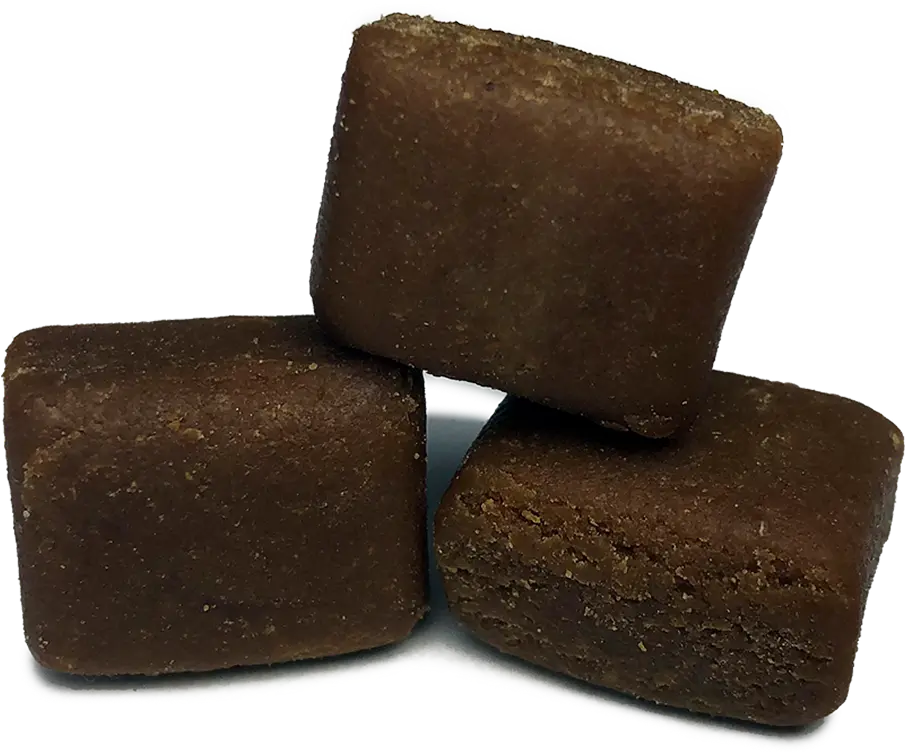
Uncompromising
Quality. Certified
for Safety.
From ingredient sourcing to final product testing,
every step meets the highest industry standards.

Our Commitment
to Quality
We adhere to rigorous quality standards, using only the highest-grade, clinically-proven ingredients to ensure optimal results. Every ingredient we use is premium and backed by science — because your well-being deserves nothing less.
Microbial Testing
Microbial testing is crucial for ensuring Flexpet is safe to consume on a long-term daily basis.
We Rule Out:
- Harmful bacteria, including Salmonella, E. coli, or Staphylococcus.
- Molds and yeasts that have been linked to immune disruption.
- Microbes that can produce toxic substances like mycotoxins and aflatoxins.
Potency Testing
All raw ingredients that we use are in compliance with The Association of American Feed Control Officials (AAFCO).
Each batch is screened for:
- Harmful bacteria like Salmonella, E. coli, and Staphylococcus
- Molds and yeasts that may affect health
- Dangerous toxins including mycotoxins and aflatoxins
Certificate of Analysis
Each batch of FlexPet is tested for a panel of quality and purity analytes, including microbial contaminants, heavy metals, allergens, and banned substances. As part of routine testing, we also test for chemical compounds like caffeine and oxalates.
Our Testing Process
1
Sourcing
2
Inbound Testing
3
Manufacturing
4
In-Process Testing
5
Final CoA Release
You've got questions? We've got the answers.
What is the difference between Flexpet
Maximum Strength vs the Flexpet Regular
Strength?
Flexpet offers two formulations of joint health supplements for pets: Regular Strength and Maximum Strength. Both are designed to enhance mobility and flexibility in pets suffering from stiff, sore, and painful joints. Regular Strength contains the following active ingredients per serving (2 chewable tablets):
- Cetyl Myristoleate (CM8®): 150 mg
- Methylsulfonylmethane (MSM): 500 mg
- Glucosamine Sulfate Potassium: 270 mg
- Hydrolyzed Collagen Type II: 150 mg
- Bromelain: 83 mg
- Vitamin C (as ascorbic acid): 65 mg
- Digestive Enzyme: 10 mg
Maximum Strength shares the same active ingredients but contains 3 times the amount of mg of our main ingredient CM8. The serving size is 2 soft chews:
- Cetyl Myristoleate (CM8®): 500 mg
- Methylsulfonylmethane (MSM): 500 mg
- Glucosamine Sulfate Potassium: 270 mg
- Hydrolyzed Collagen Type II: 150 mg
- Bromelain: 83 mg
- Vitamin C (as ascorbic acid): 65 mg
- Digestive Enzyme: 10 mg
The increased concentration of CM8® in the Maximum Strength formula is particularly beneficial for larger dogs or those with more severe joint conditions. Additionally, the soft chew format makes them easier for older dogs or those with dental issues to consume.
I am a first time customer, Which formulation should I start with?
🐾 Start with Regular Strength if...
- Your pet is showing early signs of joint stiffness or discomfort.
- They’re small to medium-sized and don’t have major mobility Issues.
- You want to ease them into a joint supplement to see how they Respond.
- You're being cautious about introducing new ingredients or monitoring for any sensitivities.
🐾 Start with Maximum Strength if...
- Your pet is larger in size or a senior with noticeable joint pain or mobility issues.
- They’ve already shown limited response to other joint supplements.
- You're looking for a faster or more impactful improvement.
- Your vet recommended a high-potency joint support formula.
Pro Tip:You can always start with Regular Strength and switch to Maximum Strength if you don’t see the desired results in a few weeks. Flexpet’s ingredients are generally safe and well-tolerated, but every pet responds a little differently.
Is it ok to give my pet Flexpet if I am already using another joint supplement?
If your dog is already taking another joint supplement, it’s usually safe to use Flexpet, but there are a few important things to consider:
Glucosamine is a naturally occurring compound and is usually safe even at
slightly higher doses.
Flexpet includes other joint-supportive ingredients like CM8®, MSM, collagen, and bromelain, which can complement the benefits of glucosamine.
Avoid doubling up too much. Too much glucosamine can sometimes cause mild side effects like upset stomach or diarrhea.
If your current supplement already includes MSM, collagen, or similar ingredients, check the label to make sure you’re not overdoing any one ingredient.
Always introduce new supplements gradually and observe how your dogresponds.
Are the ingredients in Flexpet safe for mypet?
Yep! The ingredients in Flexpet are generally considered safe for most dogs, and the formula is designed to support joint health naturally and gently. Here's a breakdown of what's in it and why it’s included:
Ingredient Purpose Safety NotesCM8® (Cetyl Myristoleate)
Reduces joint inflammation & pain
Safe when dosed correctly.
Naturally derived.
Glucosamine Sulfate Potassium
Rebuilds cartilage & joint tissue
Very common in dog supplements.
Safe long-term.
MSM (Methylsulfonylmethane)
Reduces inflammation, supports joint health
Generally safe; may cause soft stool in high doses.
Hydrolyzed Collagen Type II
Supports cartilage and connective tissue
Well tolerated; used in many pet formulas.
Bromelain Natural enzyme that reduces inflammation
Safe; from pineapple.
Can help with digestion too.
Vitamin C Antioxidant support for joint repair
Safe in moderate amounts; dogs make some on their own, but extra can help with healing.
Digestive Enzymes Help absorb nutrients better
Safe and beneficial for older dogs or dogs with sensitive stomachs.
General Safety Tips:
- Always follow recommended dosage based on your dog’s weight.
- Monitor your dog when starting any new supplement, especially for the first 1–2 weeks.
- If your dog has allergies, a sensitive stomach, or other medical issues, it’s always a good idea to ask your vet first.
- Don't combine with other supplements containing similar ingredients unless cleared by a vet to avoid over-supplementing.
If my dog has just suffered an injury, is it okay to start a joint supplement?
When it’s usually okay to start:
- If your dog has a mild sprain, strain, or soft tissue injury, joint supplements can actually support recovery by:
- Reducing inflammation (thanks to CM8, MSM, bromelain, etc.)
- Supporting joint and tissue repair (with glucosamine, collagen,
etc.) - You’re giving it alongside vet-recommended care, like rest, cold compresses, or meds.
How Flexpet Aids in Recovery from an ACL Injury?
1. Reduces Inflammation & Pain
CM8® (Cetyl Myristoleate) and MSM both have strong anti-inflammatory properties.
Helps reduce joint swelling and stiffness around the injured knee (called the stifle joint in dogs).
2. Supports Joint Healing & Strength
Glucosamine, collagen, and Vitamin C help rebuild cartilage, tendons, and connective tissues—crucial after an ACL injury.
Even if surgery is involved, these nutrients support healing post-op.
3. Protects Other Joints
Dogs with ACL injuries often put extra weight on their other leg, which increases the risk of injury in the opposite knee.
Flexpet helps keep the other joints strong and supported, potentially lowering the risk of a second ACL tear.
4. Improves Mobility During RecoveryIngredients like bromelain can help with soreness and swelling, making it easier for your pup to move around more comfortably during rehab.
Pro Tip:
Flexpet is best used as part of a multi-pronged recovery plan, including:
- Rest/limited movement
- Physical therapy (if prescribed)
- Weight management
- Possibly surgery, depending on the case
At what age can I begin giving my dog Flexpet?
1–3 Years Old (Young Adult)
Okay to start preventatively, especially for:
- Large breeds (like Labs, German Shepherds, Goldens)
- Very active dogs (agility, working dogs, etc.)
- Breeds prone to joint issues (e.g., Bulldogs, Dachshunds, Rottweilers)
- Helps maintain healthy joints before problems develop.
4–7 Years Old (Middle Age)
Great time to start Flexpet if not already on a supplement.
- At this stage, even healthy joints can begin to experience wear and tear.
- Flexpet can help slow down degeneration and ease minor stiffness.
8+ Years Old (Senior Dogs)
Highly recommended for older dogs.
- Helps reduce pain, improve mobility, and maintain quality of life.
- Can be a natural support alongside or in place of some prescription meds (with vet approval).
Should I use a brace when I start my dog on Flexpet?
Flexpet can definitely help with joint health and recovery, but whether your dog also needs a brace depends on why you’re using Flexpet in the first place.
When a Brace Can Be Helpful:
You might want to use a brace alongside Flexpet if your dog has:
Condition Why a Brace HelpsACL/CCL injury (partial tear or post-op)
Stabilizes the knee, reduces strain, and can help prevent re-injury.
Arthritis or joint instability Supports the joint and improves weight distribution.
Luxating patella Keeps the kneecap in place and limits painful movement.
Hip dysplasia (in mild to moderate cases)
A hip brace can offer support and reduce discomfort during movement.
Senior dogs with weak joints Provides extra support for stability and confidence while walking.
In these cases, a brace + Flexpet can be a power combo: Flexpet helps internally with inflammation and healing, and the brace gives external support.
Is there a particular diet that my dog should
adhere to in order to promote optimal joint
health, especially while incorporating
Flexpet?
Yes! A good diet can seriously boost the benefits of joint supplements like Flexpet and help your dog maintain healthy, pain-free joints for the long haul.
Here’s a guide to building a joint-friendly diet to pair with Flexpet:
1. High-Quality Protein
- Proteins provide amino acids essential for muscle maintenance— which helps support and stabilize joints.
- Look for dog foods with named meats (e.g., chicken, beef, salmon) as the first ingredient.
- Avoid foods with vague labels like “meat meal” or lots of fillers.
✅ Great sources: Chicken, turkey, salmon, lamb, eggs
2. Anti-Inflammatory Foods
These help reduce joint inflammation naturally—just like Flexpet’s CM8® and MSM.
✅ Good options:
- Omega-3-rich fish (salmon, sardines)
- Sweet potatoes, blueberries, spinach, pumpkin
3. Weight Management
- Excess weight = more pressure on joints.
- Choose a weight-control formula if your dog is a little chunky.
- Flexpet works better when joints aren’t under too much load!
4. Keep Hydration High
- Proper hydration supports joint lubrication (think: synovial fluid).
- Make sure your pup has constant access to fresh water.
- Wet food can help if your dog isn’t a big drinker.
❌ What to Avoid:
- Excess grains and fillers (corn, soy, wheat)
- By-products and artificial additives
- Too many starchy carbs, which can worsen inflammation